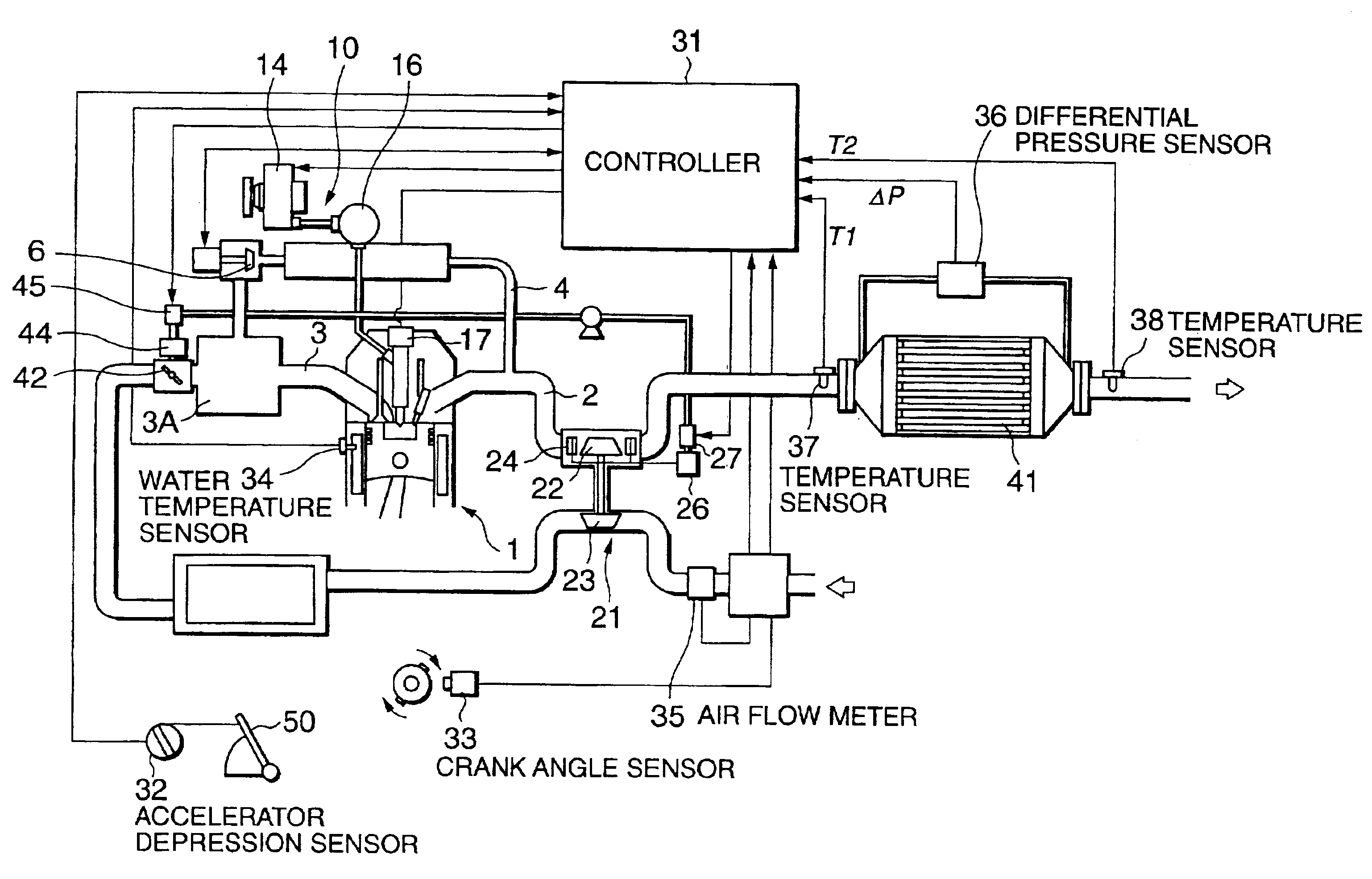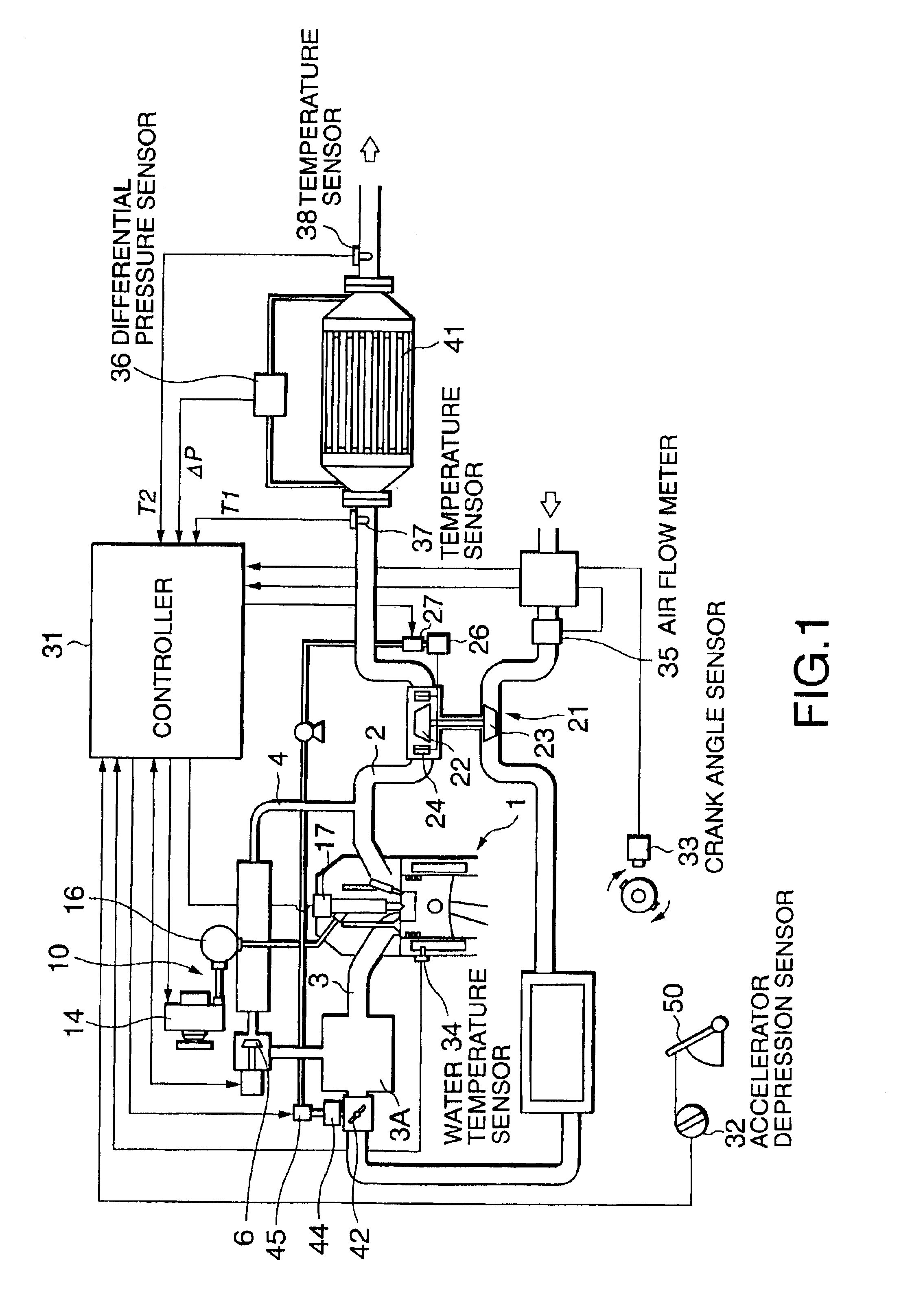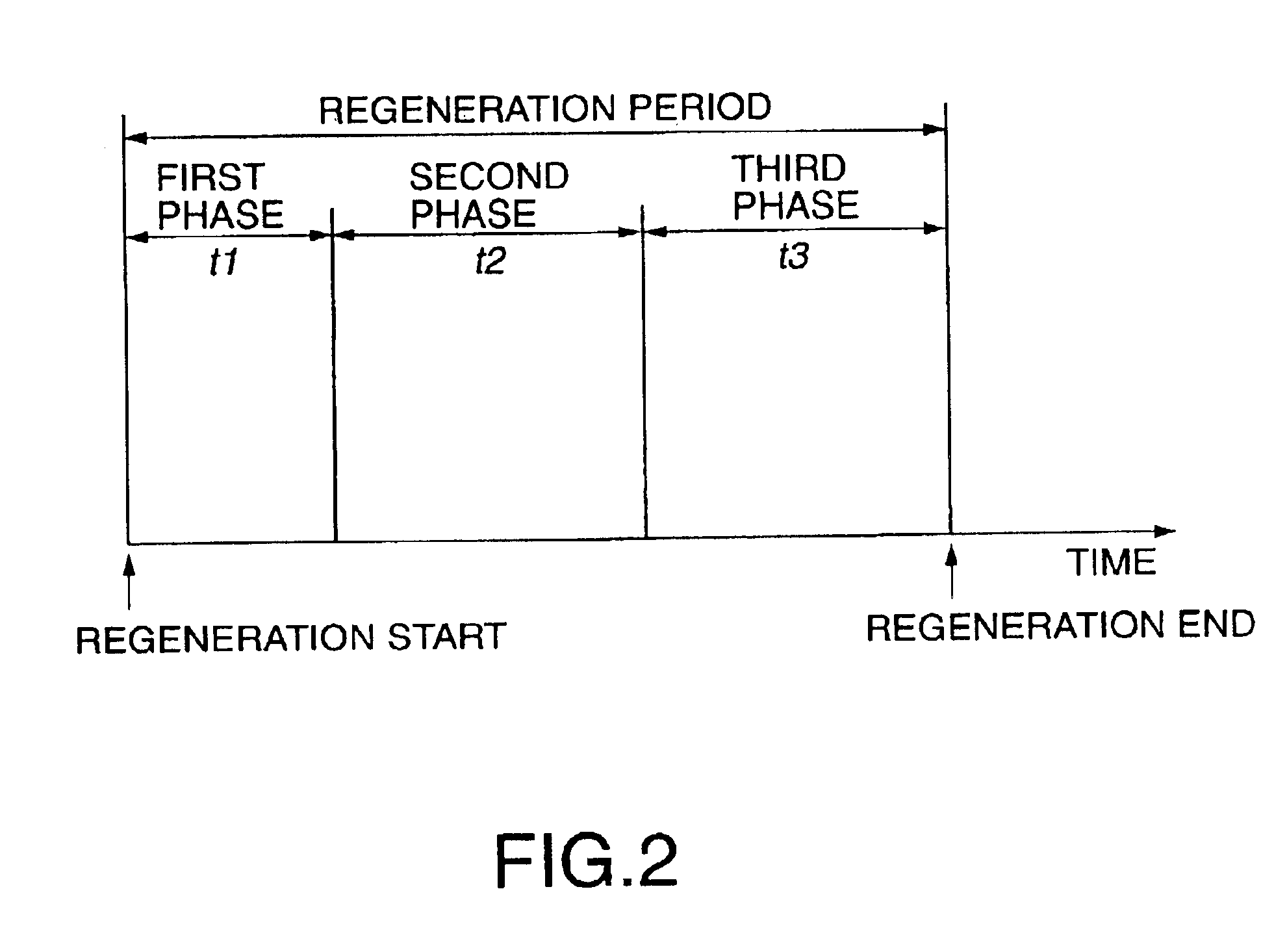Regeneration of particulate filter
a technology of particulate filter and filter bed, which is applied in the direction of mechanical equipment, machines/engines, electric control, etc., can solve the problems of excessive rise in the temperature of the filter bed at the combustion stage of particulate matter, large amount of time required for the filter temperature to rise, etc., to prevent the effect of deterioration of the filter
- Summary
- Abstract
- Description
- Claims
- Application Information
AI Technical Summary
Benefits of technology
Problems solved by technology
Method used
Image
Examples
second embodiment
Next, referring to FIGS. 13A and 13B, this invention related to setting of a target temperature of the filter inlet in the first phase, or in other words pertaining to the processing content of the step S5 in the main routine of FIG. 3, will be described.
first embodiment
In this embodiment, as shown in FIG. 13B, the first phase is divided into a first half and a second half. In the first half, the target temperature of the filter inlet is set to a target value tT2 which is larger than the target value tT1 and in the second half, the target temperature of the filter inlet is reduced from the target value tT2 toward the target bed temperature tTbed.
By setting the target value tT2 for the filter inlet temperature to a larger value than the target value tT1 in the first half, the rate of temperature increase of the bed temperature Tbed rises and the timing of arrival at the target bed temperature tTbed quickens, and thus the time period t1 is shortened to t1A. The target temperature tT2 of the filter inlet is reduced prior to the bed temperature Tbed reaching the target bed temperature tTbed, and hence overshoot in the bed temperature Tbed such as that shown in FIG. 12A does not arise. For comparison, the bed temperature Tbed and the target value tT1 f...
PUM
 Login to View More
Login to View More Abstract
Description
Claims
Application Information
 Login to View More
Login to View More - R&D
- Intellectual Property
- Life Sciences
- Materials
- Tech Scout
- Unparalleled Data Quality
- Higher Quality Content
- 60% Fewer Hallucinations
Browse by: Latest US Patents, China's latest patents, Technical Efficacy Thesaurus, Application Domain, Technology Topic, Popular Technical Reports.
© 2025 PatSnap. All rights reserved.Legal|Privacy policy|Modern Slavery Act Transparency Statement|Sitemap|About US| Contact US: help@patsnap.com



